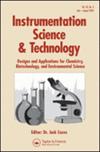Sensitive temperature measurement with composite multicavity Fabry-Perot interferometers (FPIs) and differential phase demodulation
IF 1.3
4区 工程技术
Q4 CHEMISTRY, ANALYTICAL
引用次数: 0
Abstract
Abstract A temperature sensor based on composite multicavity Fabry-Perot interferometers (FPIs) and a sensitivity-enhanced differential phase demodulation method is proposed and demonstrated. The structure was fabricated by partially filled polydimethylsiloxane (PDMS) into a segment of hollow-core fiber (HCF) which is spliced with a single-mode fiber (SMF). In this structure, composite multicavity FPIs are formed, including an air-cavity FPI, a PDMS-cavity FPI and an air-PDMS cavity FPI. The contribution of the different FPIs to the superimposed spectrum is analyzed from the simulated and experimental perspectives. The results demonstrate that the superimposed output spectrum is mainly produced by the air-cavity FPI and the air-PDMS cavity FPI. When the temperature increases, the lengths of the PDMS-cavity and the air-PDMS cavity are enhanced due to the volume expansion of PDMS, and the length of the air-cavity decreases because the air-cavity is compressed by the expanded PDMS. The cavity length variation causes the phase variation in the air-cavity FPI to be the opposite to that in the PDMS-cavity FPI or air-PDMS cavity FPI. Therefore, the phase demodulation sensitivity is enhanced by calculating the differential phase between the air-cavity FPI and the air-PDMS cavity FPI. The experimental results show that the sensitivity amplification factor of differential phase to the single phase of the air-cavity FPI or the air-PDMS cavity FPI is from approximately 1.44–3.25. This phase demodulation method is simpler, faster, more direct, and more convenient than wavelength demodulation from the perspective of demodulating composite interferometers.复合多腔法布里-珀罗干涉仪(fpi)和差分相位解调的敏感温度测量
摘要提出并演示了一种基于复合多腔法布里-珀罗干涉仪和灵敏度增强差分相位解调方法的温度传感器。该结构是通过将聚二甲基硅氧烷(PDMS)部分填充到与单模光纤(SMF)拼接的中空芯光纤(HCF)段中来制造的。在该结构中,形成复合多腔FPI,包括空气腔FPI、PDMS腔FPI和空气PDMS腔FPI。从模拟和实验的角度分析了不同FPI对叠加光谱的贡献。结果表明,叠加输出谱主要由空气腔FPI和空气PDMS腔FPI产生。当温度升高时,由于PDMS的体积膨胀,PDMS腔和空气PDMS腔的长度增加,并且由于膨胀的PDMS压缩空气腔,所以空气腔的长度减小。空腔长度变化导致空气空腔FPI中的相位变化与PDMS空腔FPI或空气PDMS空腔FPI中的相变化相反。因此,通过计算空气腔FPI和空气PDMS腔FPI之间的差分相位,提高了相位解调灵敏度。实验结果表明,气腔FPI或空气PDMS腔FPI的微分相位对单相的灵敏度放大因子约为1.44–3.25。从解调复合干涉仪的角度来看,这种相位解调方法比波长解调更简单、更快、更直接、更方便。
本文章由计算机程序翻译,如有差异,请以英文原文为准。
求助全文
约1分钟内获得全文
求助全文
来源期刊

Instrumentation Science & Technology
工程技术-分析化学
CiteScore
3.50
自引率
0.00%
发文量
45
审稿时长
>12 weeks
期刊介绍:
Instrumentation Science & Technology is an internationally acclaimed forum for fast publication of critical, peer reviewed manuscripts dealing with innovative instrument design and applications in chemistry, physics biotechnology and environmental science. Particular attention is given to state-of-the-art developments and their rapid communication to the scientific community.
Emphasis is on modern instrumental concepts, though not exclusively, including detectors, sensors, data acquisition and processing, instrument control, chromatography, electrochemistry, spectroscopy of all types, electrophoresis, radiometry, relaxation methods, thermal analysis, physical property measurements, surface physics, membrane technology, microcomputer design, chip-based processes, and more.
Readership includes everyone who uses instrumental techniques to conduct their research and development. They are chemists (organic, inorganic, physical, analytical, nuclear, quality control) biochemists, biotechnologists, engineers, and physicists in all of the instrumental disciplines mentioned above, in both the laboratory and chemical production environments. The journal is an important resource of instrument design and applications data.
 求助内容:
求助内容: 应助结果提醒方式:
应助结果提醒方式:


